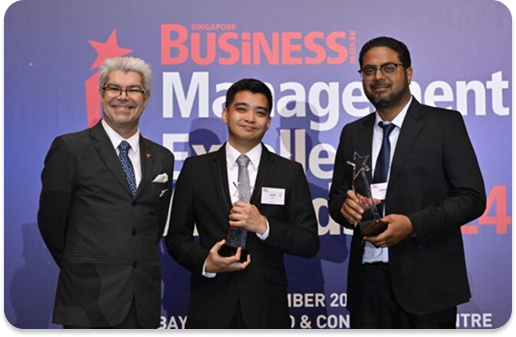In today’s growing digital environment, delivering exceptional customer support is key to a good business return.
For many companies, outsourcing customer support has become a strategic move to ensure their customers receive top-notch service while achieving significant cost savings on expenses such as shipping and packaging discounts, overhead costs, and customer contact expenses through third-party providers.
However, successfully outsourcing customer service requires careful planning and execution. In this guide, we’ll explore how to outsource customer service the right way so your business remains finely tuned and revved for success.
Table of Contents
Why Outsource Customer Support?

Call center outsourcing and customer support outsourcing gives opportunities to a pool of skilled professionals who bring experience and specialized knowledge to the field. You can easily add or remove customer service agents as needed to match your business requirements.
These experts are trained to handle various customer inquiries, technical issues, and service challenges with precision and expertise. Using their skills ensures high-quality customer interactions which can enhance customer satisfaction and loyalty.
Outsourcing partners lets you stay updated with industry trends and best practices, providing businesses with cutting-edge support solutions.
Whether your business experiences seasonal changes, sudden growth spurts, or unexpected dips in customer inquiries, an outsourcing partner can quickly scale operations up or down, especially for clients with dynamic or unpredictable customer service needs.
8 Steps To Getting The Right Customer Support
Step 1: Identify Your Needs

Before you begin the outsourcing journey, always identify your specific customer support needs first. Determine the scope of services required, such as handling inquiries, technical support, or managing social media interactions.
Understanding your needs will help you find a provider who shares your business goals. Start by evaluating your current customer support operations in terms of time, energy, and budget allocation.
What are the strengths and weaknesses? Identify any gaps in service or areas where your team struggles to meet customer expectations. Are your customers more likely to seek help via phone, email, or chat? Do they prefer immediate responses, or are they comfortable waiting for an email reply?
Take the time to meticulously assess and define these needs to ensure a successful outsourcing partnership that drives efficiencies.
Step 2: Choose The Right Partner
A well-chosen partner can enhance your customer service and support your business growth, while a poor choice can lead to frustration, inefficiencies, and customer dissatisfaction.
Begin by researching potential outsourcing partners. Consider the various aspects of customer service outsourcing, including the pros and cons, to make an informed decision. Look for companies that specialize in customer support services and have a strong presence in your industry.
Compile a list of potential partners and gather information about their services, capabilities, and client reviews. Compare different customer service providers, including offshore and onshore options to find the best fit for your needs.
A partner with relevant industry experience will be better equipped to handle customer inquiries, technical issues, and industry-specific regulations. Look for providers with positive testimonials, case studies, and references from previous or current clients.
Also, if your business operates globally, consider potential partners’ language capabilities and time zone coverage. Choose a provider that can offer multilingual support and operate in the time zones of your key markets.
Enforcing a meticulous selection process sets the stage for a successful outsourcing journey that supports your business growth and operational excellence.
Step 3: Define Clear Objectives
Know the objectives of your brand and establish key performance indicators (KPIs) to visualize the success of your outsourcing efforts.
Whether improving response times, increasing customer satisfaction, or reducing costs, having well-defined goals will keep your outsourcing strategy on track and running at full throttle.
Ensure that your outsourcing objectives align with your overall business goals. Whether you’re driving growth or improving its efficiency, alignment ensures that your outsourcing strategy supports your long-term vision.
For instance, if your business aims to expand into new markets, your outsourcing partner should be prepared to scale up support services accordingly.
As your business gears up to enter new territories, your support operations should be ready to shift up and handle increased customer interactions seamlessly.
Flexibility ensures you can meet customer demands during peak times without compromising service quality. A partner that can shift their operations to match your growth is shown to generate long-term success.
Step 4: Ensure Seamless Integration

Open and transparent information sharing is the first step toward successful integration. Provide your outsourcing partner with all necessary information about your products, services, processes, and customer preferences.
Knowledge transfer allows the external team to understand your business and deliver support that syncs with your standards. Communicate closely with your outsourcing partner to match their processes with your internal workflows.
Follow standard operating procedures (SOPs), escalation protocols, and quality assurance measures. By aligning processes, you ensure that both teams operate on the same wavelength, which lessens the risk of miscommunication.
Step 5: Implement Training Programs
Invest in training programs for your outsourced team to ensure consistency and quality. Emphasize the importance of training the customer service team to reflect the brand’s voice and tone.
Please provide them with detailed information about your products, services, and brand values. Training should be ongoing, allowing the team to stay updated and revved up to meet your customers’ needs.
Training should cover your products and services, company culture, values, and customer service philosophy. Such training methods could be done in the following forms:
- Instructor-Led Training: Live sessions conducted by experienced trainers to provide in-depth knowledge and answer questions in real time.
- E-Learning Modules: Interactive online courses that allow the team to learn at their own pace.
- Workshops and Simulations: Hands-on workshops and role-playing scenarios to practice real-world situations and develop practical skills.
- Documentation and Manuals: Guides and manuals that serve as reference materials for the team.
Effective integration ensures that your outsourced team operates as a significant part of your in-house team, giving consistent and high-quality support for your customers and their business.
Step 6: Monitor Performance And Provide Feedback
Monitor your outsourced team’s performance against the established KPIs regularly. It is crucial to monitor the performance of the customer support team, especially during peak times, to ensure they maintain the brand voice and tone.
Implement methods like providing customer satisfaction scores, response times, and resolution rates to assess their effectiveness.
Use performance dashboards that provide real-time data and insights into the team’s performance. Dashboards can visually represent KPIs, making it easier to identify areas that need attention and spot industry trends. A well-designed dashboard ensures that performance monitoring is efficient and precise.
Performance reviews help keep everyone in sync and focused on continuous improvement in customer support operations.
Based on the performance data, offer constructive feedback. Highlight areas where the team excels and acknowledge their achievements.
Provide specific, actionable suggestions for areas needing improvement. Regularly review and update your feedback mechanisms to ensure they remain relevant and practical.
Step 7: Maintain Open Communication

Effective communication is the backbone of successful outsourcing. Outsourced customer service offers added flexibility and expanded support coverage, allowing businesses to focus on other aspects of their operations.
Schedule regular meetings with your outsourcing partner to discuss performance, address challenges, and share updates. Open communication keeps everyone in sync and helps address issues before they escalate.
Establish a routine for regular meetings with your outsourcing partner. Depending on your business’s needs, these meetings can be weekly, bi-weekly, or monthly. Video conferencing can be used for face-to-face meetings, email for detailed updates or instant messaging for quick questions.
Set a clear agenda that outlines the topics to be discussed for each meeting. Share the agenda in advance so that all participants can prepare.
Promote an open dialogue culture where your internal team and the outsourcing partner feel comfortable sharing their thoughts, concerns, and suggestions.
Encourage your outsourcing partner to report any issues or challenges as soon as they arise. Promptly addressing issues prevents them from escalating into more significant problems and demonstrates your commitment to supporting the partnership.
Be proactive in finding solutions and providing the necessary resources to resolve issues efficiently. Customer support needs can change due to evolving customer expectations, new products or services, and market dynamics. Be prepared to adapt your communication processes as needed.
Step 8: Focus On Continuous Improvement
Outsourcing is not a set-and-forget solution. Working with an outsourced customer service provider offers added flexibility to adjust customer service agents as needed.
Continuously evaluate and refine your outsourcing strategy to adapt to changing business needs and market conditions.
Measuring the success of the outsourced customer service team and using specific platforms to track metrics is crucial. Encourage your outsourcing partner to innovate and bring new ideas ensuring your customer service remains engineered for growth.
Establish a continuous improvement loop that includes regular evaluation, feedback collection, analysis, and implementation of changes. An iterative process ensures that your outsourcing strategy evolves in response to changing needs and conditions.
Continuous improvement is a long-term commitment. Stay dedicated to regularly evaluating and refining your outsourcing strategy to ensure sustained success.
A long-term commitment to improvement ensures that your customer support remains high-quality, efficient, and capable of driving growth.
Conclusion About How To Outsource Customer Support
Outsourcing customer support can be a powerful strategy for driving growth, efficiency, and customer satisfaction. Focus on key areas to ensure your outsourcing efforts are finely tuned and engineered for success.
Remember, the goal is to create a seamless and integrated customer support experience that aligns with your business objectives and enhances your brand reputation. Gear up with GearInc and let us help you boost customer satisfaction and engineer growth for your business.
Contact us today and let us take your customer service to the next level with outsourcing done right.
Frequently Asked Questions About How To Outsource Customer Support
What Should I Look For In An Outsourcing Contract?
When reviewing an outsourcing contract, consider critical elements such as service level agreements (SLAs), data security and privacy clauses, termination terms, pricing structure, and performance metrics.
Ensure the contract clearly defines the parties’ responsibilities and includes provisions for regular performance reviews and adjustments as needed.
How Do I Handle Language And Cultural Differences With An Outsourced Team?
Handling language and cultural differences involves selecting an outsourcing partner with multilingual capabilities and cultural understanding. Ensure the team is proficient in your customers’ languages and familiar with cultural nuances.
Cultural sensitivity training and regular communication can help bridge gaps and enhance the customer experience.
Can I Outsource Only Specific Parts Of My Customer Support Operations?
Yes, you can outsource specific parts of your customer support operations, such as technical support, live chat, or social media management, to retain control over certain aspects while benefiting from the expertise and efficiency of an outsourced team for others. When outsourcing, consider the choice between offshore and onshore customer service providers, taking into account factors such as fluency and hours of operation.
What Are The Costs Involved In Outsourcing Customer Support?
The costs of outsourcing customer support can vary based on several factors, including the level of service required, the volume of inquiries, and the geographical location of the outsourcing partner. Typical costs include setup fees, monthly service charges, and expenses per interaction.
Getting detailed pricing information from potential partners and comparing them is essential to ensuring you’re getting value for your investment.













